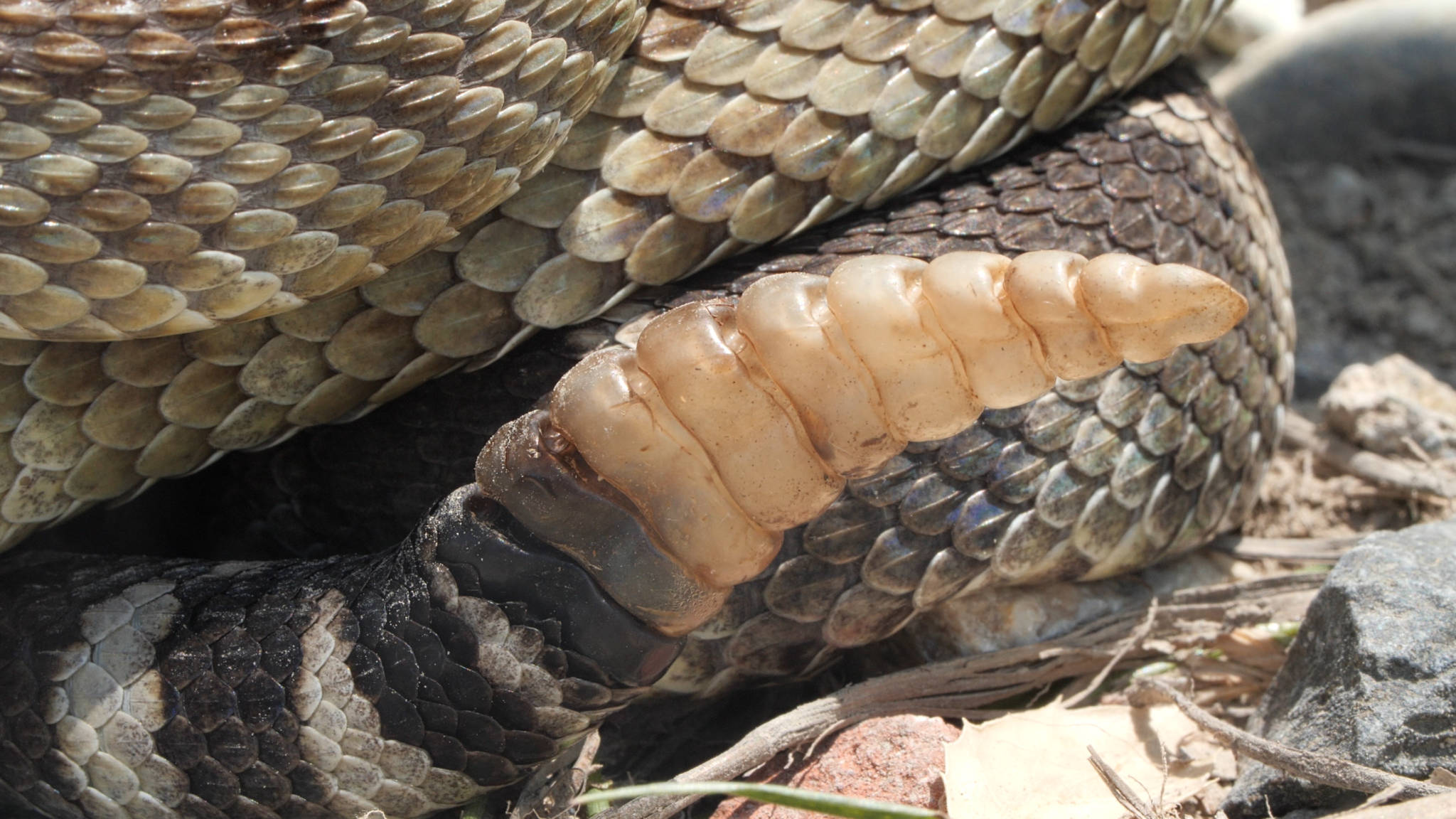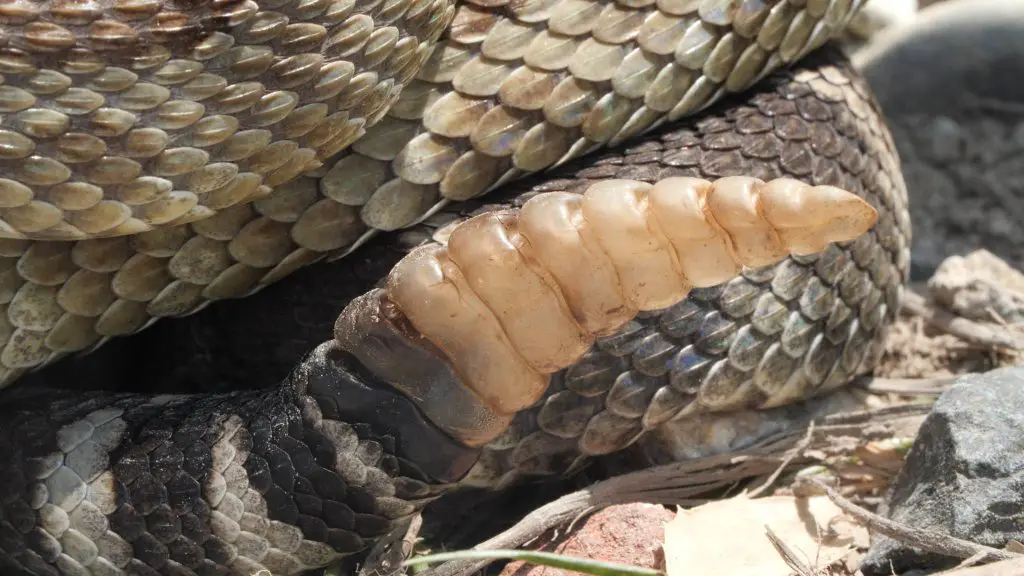Rattlesnakes, with their distinct rattle, have fascinated people for centuries. But have you ever wondered how many rattles a rattlesnake actually has? This question may seem simple, but the answer is actually quite complex and varies from snake to snake. In this article, we will explore the factors that determine the number of rattles on a rattlesnake and delve into the fascinating world of these venomous reptiles. So, let’s get started!
Rattlesnakes have a varying number of rattles, depending on their age and species. The number of rattles increases as the snake sheds its skin and grows, with a newborn rattlesnake having no rattles at all. The most common species of rattlesnake, the western diamondback, typically has between 8 and 10 rattles, although some individuals have been known to have up to 30.

How Many Rattles on a Rattlesnake?
Rattlesnakes are known for their unique rattling sound that they make by shaking their tails. This sound is often used as a warning signal to keep predators and humans away. But have you ever wondered how many rattles a rattlesnake has? In this article, we will explore the answer to this question and learn more about these fascinating creatures.
The Anatomy of a Rattlesnake
Rattlesnakes are part of the pit viper family and are found in various parts of the world. They have a distinctive triangular-shaped head, two fangs, and a long, slender body covered with scales. The tail of a rattlesnake is made up of a series of interlocking, hollow segments called rattles.
The number of rattles on a rattlesnake varies depending on its age and species. In general, each time a rattlesnake sheds its skin, it adds a new rattle to its tail. However, the number of times a rattlesnake sheds its skin each year depends on its age, health, and habitat. On average, a rattlesnake sheds its skin between two to three times a year.
The Number of Rattles on a Rattlesnake
The number of rattles on a rattlesnake can range from one to more than 20, depending on the species. For example, the eastern diamondback rattlesnake can have up to 20 rattles, while the massasauga rattlesnake usually has only three to five rattles. The number of rattles can also vary within a species, with some rattlesnakes having more or fewer rattles than others.
It’s important to note that the number of rattles on a rattlesnake is not an accurate indicator of its age. The rate at which a rattlesnake sheds its skin can vary depending on environmental factors, such as temperature and food availability. Therefore, a smaller rattlesnake with more rattles may not necessarily be older than a larger rattlesnake with fewer rattles.
The Significance of Rattlesnake Rattles
Rattlesnake rattles are an important part of their defense mechanism. When threatened, a rattlesnake will shake its tail, causing the rattles to make a loud, distinctive sound. This sound warns predators and humans to stay away, giving the rattlesnake time to escape or prepare to defend itself.
Rattlesnake rattles also play a role in reproduction. During mating season, male rattlesnakes will use their rattles to attract females. They will shake their tails, creating a distinctive sound that signals their presence to nearby females.
The Benefits and Risks of Rattlesnake Rattles
Rattlesnake rattles have been used for centuries in traditional medicine and as a decorative item. Some cultures believe that rattlesnake rattles have healing properties and can be used to treat various ailments. However, there is no scientific evidence to support these claims.
On the other hand, rattlesnake bites can be dangerous and potentially life-threatening. If you encounter a rattlesnake in the wild, it’s important to keep your distance and avoid disturbing it. If you are bitten by a rattlesnake, seek medical attention immediately.
The Bottom Line
Rattlesnakes are fascinating creatures with unique features, including their rattles. While the number of rattles on a rattlesnake can vary, it is an important part of their defense mechanism and plays a role in reproduction. However, it’s important to remember that rattlesnake bites can be dangerous and should be taken seriously. If you encounter a rattlesnake, always give it space and respect its territory.
Frequently Asked Questions
What is a Rattlesnake?
A Rattlesnake is a venomous snake that is native to the Americas. They are known for their distinctive rattle on their tails, which they use as a warning to potential predators.
Rattlesnakes come in many different species, with varying sizes, colors, and patterns. They are an important part of the ecosystem, serving as both predator and prey.
How do Rattlesnakes Get Their Rattles?
Rattlesnakes are born with a small button on the end of their tails, which they use to make a buzzing sound. As they grow and shed their skin, a new segment is added to the button, creating the rattle.
The number of segments can vary greatly between individual snakes, with some having only one or two, and others having more than a dozen. The size and shape of the segments can also differ, depending on the species.
What is the Purpose of the Rattles?
The main purpose of the rattles is to warn potential predators of the snake’s presence. When threatened, the snake will shake its tail rapidly, causing the rattle to make a loud buzzing sound.
This sound serves as a warning to animals to stay away, as the snake is venomous and can be dangerous if provoked. The rattle also helps the snake to locate prey, as the buzzing sound can attract small rodents and other animals.
Do Rattlesnakes Lose Their Rattles?
Yes, rattlesnakes can lose their rattles over time. Each time a snake sheds its skin, the segments of the rattle may break or fall off, reducing the overall size of the rattle.
However, the snake can continue to add new segments to the rattle, so it can continue to grow and make noise. Some older rattlesnakes may have very long rattles, with dozens of segments.
Is the Number of Rattles an Indicator of a Snake’s Age?
While it is often thought that the number of rattles on a snake’s tail is an indicator of its age, this is not always the case. Factors such as how often the snake sheds its skin, and how quickly it grows, can affect the rate at which the rattle grows.
Additionally, snakes can lose segments of their rattles over time, which can make it difficult to accurately determine their age based on the number of rattles alone. Other methods, such as examining the snake’s size and coloration, may be more reliable indicators of age.
How and Why Does A Rattlesnake Produce Its Rattle?
In conclusion, the number of rattles on a rattlesnake can vary greatly depending on its age, species, and environmental factors. While some rattlesnakes may only have one or two rattles, others can have up to 30 or more.
It’s important to note that the number of rattles on a rattlesnake does not necessarily indicate its level of danger. Regardless of the number of rattles, all rattlesnakes should be treated with caution and respect.
In the end, whether you encounter a rattlesnake with one rattle or 20, it’s always best to keep a safe distance and appreciate these fascinating creatures from afar.


